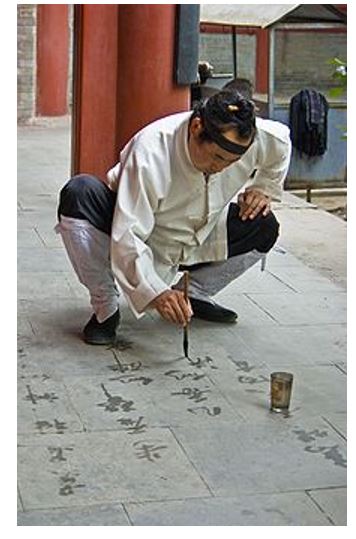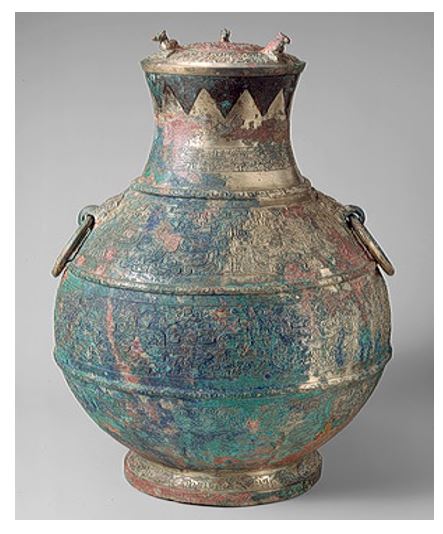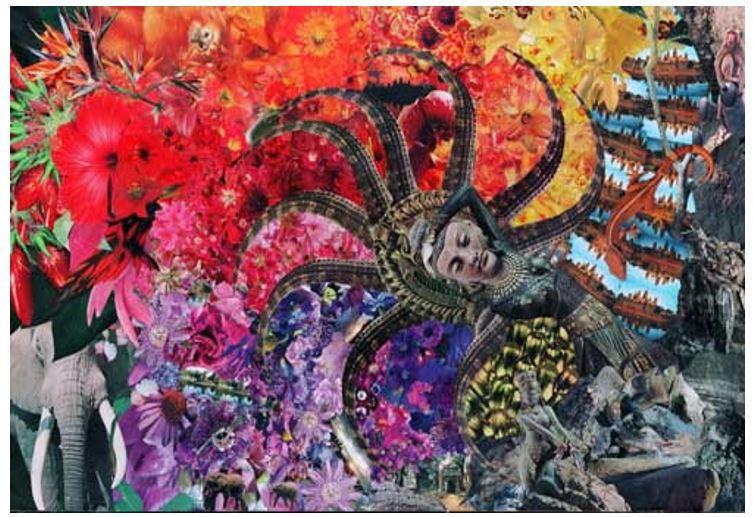Executive summary
One important aspect about the development of brush painting in China is that; on top of being skilled in making artistic works through brush painting, the Chinese were also good manufacturers of brushes. Initially, the most commonly used ink in brush painting in China was black in color. As it has been revealed, the Chinese brush was made from a variety of materials ranging from animal materials to plant materials like animals’ fur and Bamboo among others. Throughout various periods, the art of painting developed with modifications to the techniques applied on various brush paintings. Such techniques flourished with time as a result of many students in the country being taught various brush techniques.
It is important to note that, Chinese brush painting started as early as 600 years ago. Basically, the introduction of Buddhism in China in the year 4000 BC initiated the period of artistic development in the country. This was triggered by the introduction of various architectures in the country which necessitated decorations as per the religion. Other ritual vessels in the country were decorated using the brush and ink; resulting in the flourishing of the brush painting in the country.
More specifically, various forms of art were developed over time; whose main form of decoration was through the use of the brush. For instance, “flower and bird painting” was one of the religious artworks which were upheld up to the onset of the 19th century.
Generally, Chinese brush painting is one of the main reflections of the country’s philosophical movements. For instance, ‘Tao’ was one of the main philosophies which developed alongside Confucianism. Generally, in China, the art of painting was so skillful that, there were no sketches in paintings since the artists were very accurate.
Introduction
China has been one of the leading countries in artistic painting which has been attributed to a number of factors. The traditional activities in the country have been one of the main factors that have contributed to the development of brush painting in china. More importantly, the art of painting in China has been developing sequentially over the last 600 years ago. Traditional factors like craftsmanship like pottery among others have been one of the main factors resulting in the imminent increment in brush painting in China. In addition, the introduction of Buddhism in China in the 16th Century in china has greatly influenced the development of brush painting in China (Yang 108-134).
Basically, various artistic characters and skills in China springing from traditional practices in the country have greatly influenced the development of Chinese brush painting. As a result of the activities practiced in the country, various types of brushes were developed for special purposes and occasions. It should be noted that each brush developed was especially used for particular artistic works but not on others. More specifically, the various brushes developed were used for special purposes like painting temples, decorating pottery work and furniture work among others (Zhen 32-46).
Chinese Brush Development during Tao Era
This is a period that was marked by a remarkable increase in the artistic use of brush and paint in China. Basically, Tao was a period during the time of Confucianism which was translated as the ‘way forward’. More importantly, Tao was in most cases associated with yin and yang which meant to accept or to conform. In this regard, during this time individuals were engaging in the artistic production of various commodities; both religious and non-religious. In the year 500 BC, a symbol that represented the followers of ‘Tao’ was developed. It was painted black and white indicating its simplicity and eternity (Yang 108-134).

During the time of the introduction of Buddhism in China, in the year 1 AD, Taoism had spread in almost all corners of the country. As a result, the religious structures used in Buddhism were developed and decorated by the followers of Taoism; whose influence on the entire country was quite remarkable. In this case, the Buddha-nature was aligned with ‘Taoism’ since most of the Taos became followers of Buddhism. In this case, most Taos started advocating for ‘giving way to Buddha’. As it has been revealed, up to the year 400 AD, very many Buddhism architectures had been developed as a result of the ‘Taoism’ motto (Lewing 56-62).
More so, after Buddhism was introduced in China from India, the construction of various religious architectures like Temples among others required various decorations. As many religious architectures continued to be developed, many individuals gained experienced and exposure in various paintings resulting in competence in brush painting among the Chinese. Basically, the art of brush painting among the Chinese has been greatly influenced by the traditional artistic practices and the eminent development of Buddhism, which required the construction of more architectural structures (Dwight 66-69). It is also important to note that, most of the Taoist monks were practicing writing Chinese calligraphy using brush and ink on stones as shown below.

The Chinese Brush Painting during the Han Dynasty
This period was characterized by clerical scripts which were written with regard to the ‘Han Dynasty’. During this period, ritual vessels were specially prepared for certain occasions. The vessels, like the wine vessel, were uniquely decorated using brush and ink. Various colors were used in decorating the vessel which implied the multi-dimensional nature of the natural drink inside the vessel. Generally, the Han Dynasty period is one of the most important periods in the development of the Chinese Brush painting since it was accompanied by the development of other various structures in honor of the Dynasty (Briessen 67-72).
Since the onset of Buddhism in China, the art of brush painting thrived very deeply in the country, making it to be the major form of decoration in almost every architectural structure. More importantly, this is the time marked with the onset of literacy, where the decorations were accompanied by writings. In this case, there was advancement in modern production of some commodities like paper and advancement in the modification of the silk previously used in the earlier paintings (Dwight 66-69).
The Chinese paper used in artwork was developed in the year 100AD which was made of pulp and fine tree bark. Basically, the papers were made of different sizes and textures. As it has been revealed, the Chinese Paper is really ink-absorbent which enhanced better results of the entire painters’ work. It is important to note that, papers of both fine and rough texture were produced. One of the most unique qualities of the paper used in the painting in China was that its backside was made of ink-resistance surface which was meant to resist ink penetrations top surface was painted. The following painting represents a Byzantine Princess who was drawn and decorated on paper between the years 450 – 500 AD (Yang 12-23).
For instance, the Vessel presented below represents a traditional vessel, which was used during the time of the Han Dynasty.

The Modern Chinese Brush Painting
With the advancement of technology and the invention of more colorful painting materials, the art of painting has become quite remarkable in China. Basically, most artists in China have been employing some of the traditional techniques and skills to decorate their paintings. In this case, such decorations are enhanced by the modification of the striking skill of the brush in order to produce fine and cool paintings. In contemporary China, the Chinese Brush can be used for writing in which the paintings can be accompanied by various writings on it (Lewing 56-61).
For instance, ‘T’u hao’ is one of the most common Chinese brushes which are in most cases used in writing. Basically, the development of writing brush in China has been triggered by the increase in literacy level among the Chinese. On this basis, the Chinese brush has developed to be a multi-purpose one; in which on top of painting it has been used to write. Generally, the development of the Chinese brush has been much influenced by various economic and social changes in society (Lewing 56-67).
The following diagram represents one of the modern paintings in China, made using the modest Chinese painting bush.

Conclusion
As it has been revealed, the development of Chinese brush painting has been a sequential process that started more than six hundred years ago. The timeline development of Chinese Brush painting started in the year 1000 BC up to the contemporary society; whose development has been marked by sub-sequential modification of the structures and skills. Various architectural structures as a result of Buddhism religion and various crafts work like pottery among others have contributed a lot to the development of brush painting in China. Generally, brush painting in China has been a multidimensional process that has been changing sequentially as a result of social and economic changes.
Works Cited
Briessen, Fritz. The Way of the Brush: Painting Techniques of China and Japan. New Jersey: Tuttle Publishing, 1999.
Dwight, Jane. The Chinese Brush Painting Bible: Over 200 Motifs. New York: North Light Books, 2007.
Lewing, Paul. China Paint and Over-glaze. New York: American Ceramic Society, 2007.
Yang, Cheng. Traditional and Contemporary Chinese Brush Painting: Using Ink and Water Soluble Media. Beijing: Search Press, 2005.
Zhen, Lian. Chinese Painting Techniques for Exquisite Watercolors. New York: North light Books, 2000.